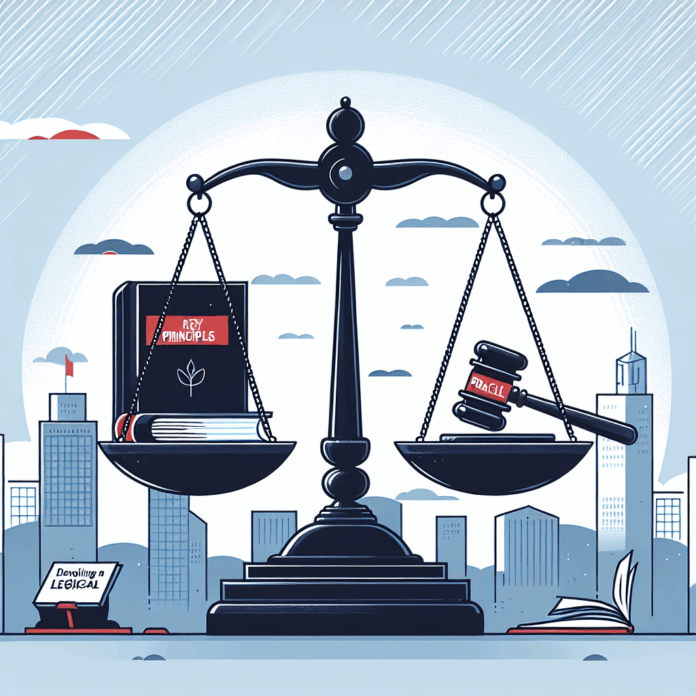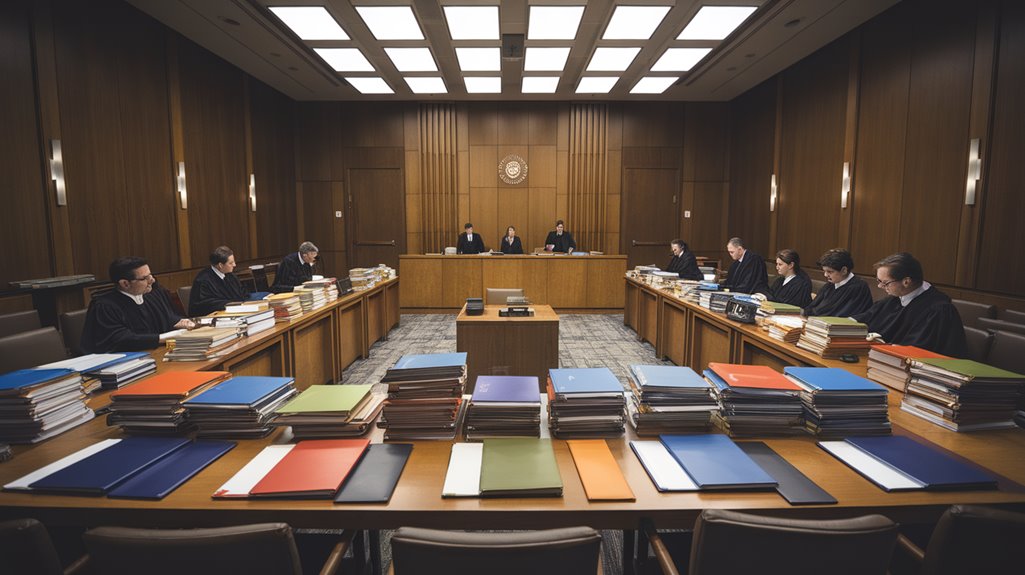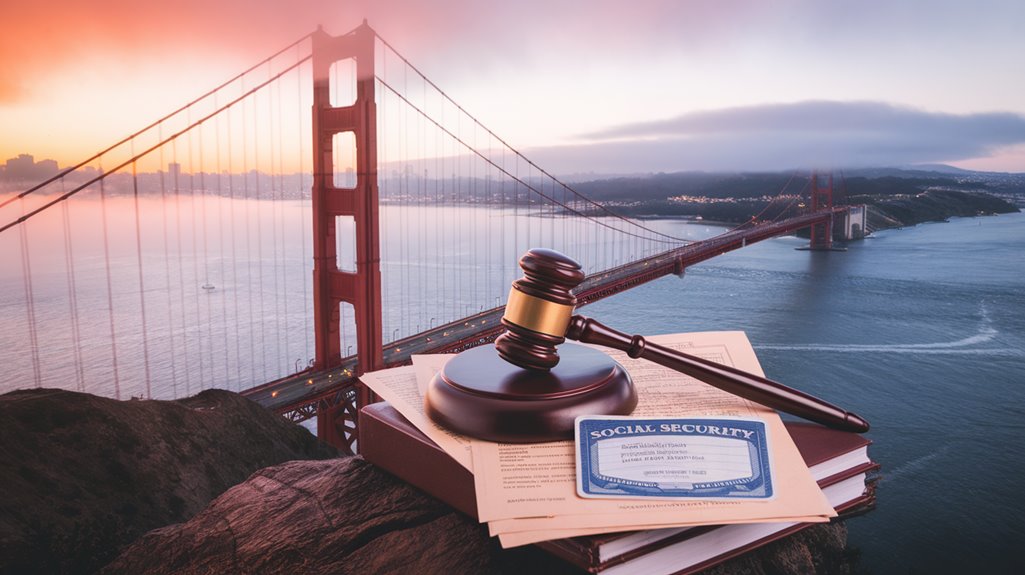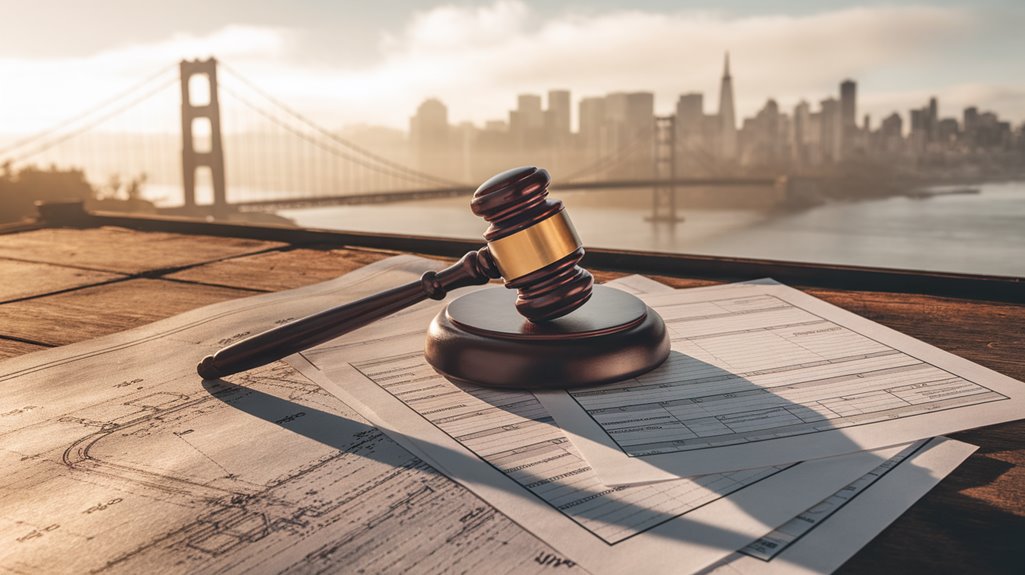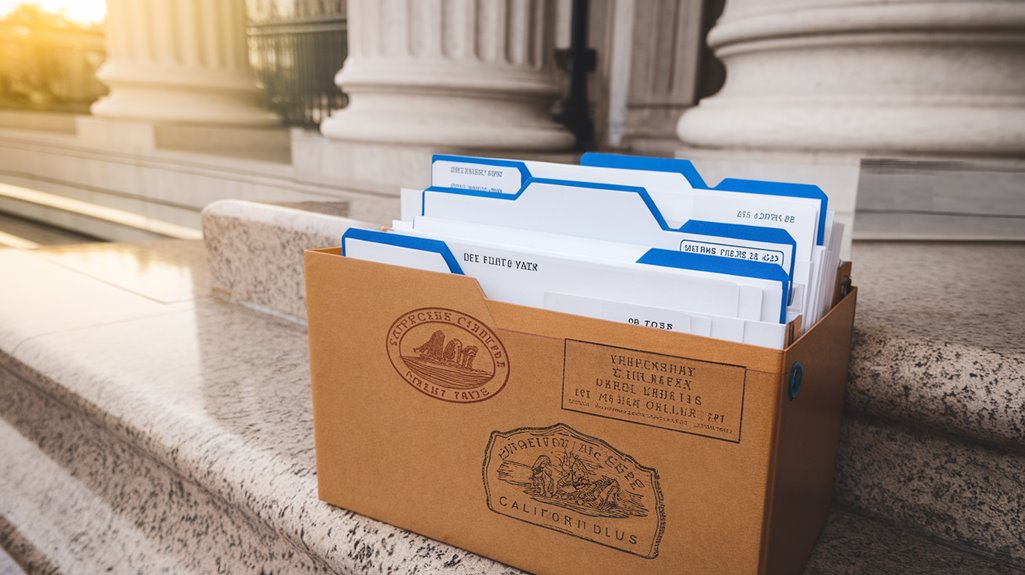Understanding Your Rights: Expert Personal Injury Advice
Introduction
Picture this: you’re merrily walking down the street, perhaps humming your favorite tune, when suddenly—bam! You slip and find yourself in a not-so-elegant heap on the sidewalk. Or maybe you’re cruising along in your car, daydreaming of sunny beaches, when another vehicle rudely interrupts your reverie. Accidents can transform a perfectly routine day into a whirlwind of stress and confusion faster than you can say “personal injury advice.”
Understanding your rights after such an incident is crucial. In fact, it’s not just about knowing what to do next—it’s about ensuring you’re equipped to protect yourself and maximize any potential compensation. According to the CDC, there were approximately 39.2 million nonfatal injury-related visits to hospital emergency departments in 2020 alone. That’s a staggering number of individuals potentially navigating the complex waters of personal injury claims.
Here’s where expert personal injury advice comes into play. Whether you’re dealing with a sprained ankle from a slip and fall or navigating the aftermath of a road accident, having access to reliable legal guidance can be invaluable. Think of it as having an experienced navigator on board your ship as you sail through murky legal waters.
Why You Need Personal Injury Advice
- Understanding Your Legal Rights: Did you know that every state has different regulations for personal injury claims? Having professional advice ensures you don’t miss out on crucial information that could affect your case.
- Avoiding Costly Mistakes: One wrong move can jeopardize your entire claim. From missteps during legal consultations to misunderstanding accident compensation terms, expert guidance helps steer clear of these pitfalls.
- Maximizing Your Compensation: Just like how you wouldn’t settle for half-baked cookies, you shouldn’t settle for less than what you’re entitled to in a personal injury settlement.
And if you think legal proceedings are only for dramatic courtroom dramas, think again! They play an integral part in real-world scenarios too. For more insights into less-known but crucial legal processes like the mysterious John Doe investigation, check out our article here.
“Navigating the world of personal injury law isn’t just about knowing where to start; it’s about being prepared for every twist and turn along the way.” – HBSLawFirm.com
Buckle up as we dive deeper into understanding personal injury advice tailored just for you!
What is Personal Injury Law?
Imagine you’re enjoying a peaceful stroll in the park when suddenly, a rogue cyclist zooms past, knocking you off your feet. Ouch! Now, besides nursing that bruise, you’re probably wondering what legal recourse you have. Enter personal injury law, your knight in shining armor when accidents disrupt your day-to-day life.
In essence, personal injury law encompasses legal remedies and defenses involved in civil lawsuits brought as a result of wrongful conduct. This area of law aims to provide injured victims with the necessary means to seek justice and compensation for their losses.
- Bodily Harm Advice: The primary focus of personal injury law is on harm caused to individuals physically. Whether it’s a slip and fall accident or medical negligence, this law area ensures victims receive appropriate compensation.
- Compensation Guidance: Personal injury laws determine how much an injured party should be compensated for their losses, factoring in medical bills, lost wages, pain and suffering, and other damages.
The beauty of personal injury law lies in its complexity – it covers a wide range of scenarios including road accidents, work-related injuries, and even slip-and-fall accidents at your favorite coffee shop. Navigating these waters requires expert advice. That’s why understanding personal injury laws can be as essential as knowing what happens if you refuse a breathalyzer test.
The Role of a Personal Injury Lawyer
A personal injury lawyer plays the crucial role of guiding clients through the often perplexing legal process of making an injury claim. They help in evaluating claims, gathering evidence, negotiating settlements, and representing clients during trials if necessary.
“Justice delayed is justice denied.” – William E. Gladstone
This famous quote underscores the importance of swift action when pursuing a personal injury claim. Engaging with an experienced attorney can expedite the process and significantly impact the outcome of your case.
If you’re dealing with an unfortunate accident scenario or simply preparing for life’s unpredictable moments, seeking expert injury advice can empower you with the knowledge needed to navigate these challenging situations effectively.
The Importance of Legal Consultation After an Injury
Let’s be honest—navigating the aftermath of an injury can feel like deciphering a foreign language. You’ve got paperwork that reads like a novel, insurance companies on speed dial, and a list of medical appointments that would make your calendar weep. That’s why legal consultation after an injury isn’t just important; it’s essential.
Why Seek Expert Personal Injury Advice?
When it comes to dealing with personal injuries, the stakes are high. A seasoned personal injury lawyer can offer guidance to help you navigate the complexities of your case while avoiding common pitfalls. Here are some critical benefits:
- Accurate Claim Evaluation: Determining the value of your claim involves more than just medical bills. Factors like pain and suffering, loss of income, and future medical needs play a role in potential compensation.
- Protection Against Insurance Tactics: Insurance companies often prioritize their bottom line over your well-being. An attorney can prevent you from accepting settlements that are far less than what you deserve.
- Navigating Legal Rights: Understanding your legal rights after an accident is crucial for ensuring fair treatment and adequate compensation.
The Anatomy of a Personal Injury Consultation
A legal consultation acts as a road map for your journey toward recovery and compensation. During this meeting, you’ll uncover answers to questions like:
- Do I have a valid claim?
- What steps should I take next?
- What kind of compensation might I expect?
This initial meeting is often free, providing you with valuable insights without financial risk.
“In personal injury cases, knowledge truly is power—and consulting with an expert turns guesswork into informed decision-making.”
A Real-Life Example: The Road to Recovery
Consider Jane, who slipped on a wet floor in her local grocery store. With no clear warning signs posted, she suffered a fractured wrist. Unsure about her next steps, Jane sought expert advice from a personal injury attorney. Through this consultation, she learned about her eligibility for a slip and fall lawsuit and was able to secure the compensation necessary for her medical expenses and lost wages during recovery.
If you’re contemplating whether or not to seek legal advice after sustaining an injury, remember this: It’s better to be safe than sorry (or broke). Expert guidance empowers you to make informed decisions about your future.
The path to recovery may be long, but with the right support by your side, you’ll never have to walk it alone.
Steps to File a Personal Injury Claim
Navigating the aftermath of an accident can feel like venturing into uncharted territory. But worry not, we’re here to give you a map and a bit of humor to lighten the load! Here’s your guide to the essential steps in filing a personal injury claim:
1. Seek Medical Attention Immediately
Your health is paramount. Before you do anything else, it’s crucial to seek medical attention. Not only is this vital for your well-being, but it also creates a record that could be pivotal for your case. Remember, skipping this step might just turn your compensation dreams into dust!
2. Gather and Document Evidence
- Photographs: Snap pictures of the accident scene, your injuries, and any property damage.
- Witnesses: Collect contact information from anyone who saw the incident unfold.
- Police Reports: Obtain and review any police reports if applicable.
The right evidence can bolster your claim like spinach did for Popeye’s biceps—suddenly you’re stronger than Hulk!
3. Consult a Personal Injury Lawyer
This step is akin to having Gandalf by your side—expert guidance can be invaluable. A personal injury lawyer can provide legal consultation, assess the viability of your claim, and navigate complex legal waters on your behalf.
If you think hiring an expert is expensive, wait until you hire an amateur.
– Red Adair
4. File Your Claim Promptly
The clock is ticking! Ensure you file within the statute of limitations in your jurisdiction; missing this could mean forfeiting any right to compensation. For instance, most states have a deadline between two to six years after the accident occurred.
5. Negotiate or Head to Trial
A big part of this process involves negotiation with insurance companies—it’s less “Let’s make a deal” and more “No funny business.” Your lawyer will handle these discussions aiming for a fair settlement. If negotiations stall, prepare for trial where your case will be presented in front of a judge or jury.
Phew! That was quite the trek through legal land, wasn’t it? Remember, each case is unique so tailoring these steps with professional advice ensures that you’re on solid ground as you seek justice and compensation for your injuries.
If you’re still scratching your head about what comes next—or if you’d rather avoid spending quality time searching for legal jargon translations—consider reaching out to an expert who can guide you through each stage with aplomb!
Maximizing Compensation After an Accident
Navigating the murky waters of compensation after an accident can feel like trying to solve a Rubik’s Cube while blindfolded. But fear not! With the right legal representation for injuries and strategic steps, you can maximize your compensation and get what you rightfully deserve.
Document Everything Like a Detective
First and foremost, channel your inner Sherlock Holmes and document everything. Gather evidence from the scene of the accident, including photos, witness statements, and police reports. This will be crucial for your injury claim process. The more detailed you are, the stronger your case.
- Photographs: Capture the accident scene from various angles.
- Witnesses: Collect contact information from anyone who saw the incident.
- Police Report: Obtain a copy to corroborate your account of events.
The Role of Medical Documentation
Your health is paramount. Ensure you receive prompt medical attention post-accident. Detailed medical records are not just necessary for your recovery but are also pivotal when seeking personal injury compensation. They serve as concrete evidence to back up your claims about injury severity and subsequent costs.
“Medical documentation can often make or break a personal injury lawsuit.” – Expert Injury Lawyer Insights
Avoid Hasty Settlements
The insurance company might approach you with a settlement offer that seems enticing at first glance. Be wary! These initial offers are often on the low end. It’s prudent to delay accepting any offer until you have completed all medical treatments and fully understand the long-term implications of your injuries. Consulting with a seasoned personal injury lawyer during this phase can provide invaluable guidance.
The Power of Legal Consultation
An experienced injury attorney guidance can significantly impact the outcome of your case. Lawyers are adept at negotiating with insurance companies, ensuring that all aspects of your losses—medical bills, lost wages, pain and suffering—are adequately covered in your settlement.
If you’re unsure about taking legal action, remember that many law firms offer a free consultation for injuries. This is an excellent opportunity to assess whether pursuing a personal injury claim is in your best interest without any upfront financial commitment.
A Quick Recap on Maximizing Compensation:
- Collect Evidence: Photos, witness information, and police reports matter.
- Pursue Medical Attention: Your health comes first; detailed records second it.
- Avoid Quick Settlements: Patience could yield higher compensation.
- Seek Expert Legal Help: A good lawyer is worth their weight in gold—or at least their fee!
Navigating through this process may seem daunting at first but remember: knowledge is power. Equip yourself with comprehensive personal injury advice and expert assistance to steer through successfully!
The Role of a Personal Injury Lawyer
Navigating the aftermath of an accident can be as challenging as finding a needle in a haystack—or in legal terms, understanding a John Doe investigation. Enter the personal injury lawyer, your legal compass in the complex world of accident compensation and injury claim processes.
Why You Need One
Imagine trying to build IKEA furniture without instructions. Now, swap that for filing a personal injury claim. A personal injury lawyer provides the roadmap you need:
- Legal Knowledge: They understand local laws and regulations, ensuring you’re not left in the dark.
- Claim Evaluation: With their expertise, they accurately evaluate what your claim is worth—no more guessing games.
- Insurance Navigation: Dealing with insurance companies can feel like negotiating with a toddler over bedtime—personal injury lawyers ensure you get what you deserve without the tantrums.
The Expertise They Bring
Personal injury lawyers aren’t just legal wizards—they’re also expert negotiators. According to Forbes, about 95% of personal injury claims are settled pretrial (Forbes). This means having someone who can effectively negotiate on your behalf could save you time and stress.
“A good lawyer knows the law; a great lawyer knows the judge.” — Anonymous
This rings true when it comes to understanding personal injury law nuances and getting you the best possible settlement. Whether it’s bodily harm advice or medical negligence guidance, their role is pivotal in translating legal jargon into plain English—so you can focus on recovery.
A Safety Net During Trying Times
No one plans to have accidents happen—but when they do, having expert injury advice makes all the difference. Your lawyer becomes your trusted advisor who helps navigate tricky waters like slip and fall advice or work-related injury guidance.
If you’re seeking comprehensive support post-accident, remember there’s an entire team ready to back you up. After all, wouldn’t it be nice if life’s unexpected moments came with their own instruction manual?
Conclusion
Navigating the labyrinth of personal injury law can feel daunting, but remember, you don’t have to go it alone. Whether you’ve been in a car accident, suffered from slip and fall injuries, or experienced any form of bodily harm, understanding your rights and seeking expert personal injury advice is crucial.
The journey to securing fair accident compensation begins with knowing the process. Start by documenting all necessary details and consulting with a reputable personal injury lawyer. They can guide you through the intricacies of filing an injury claim, ensuring that every step is in your best interest. Remember, effective personal injury strategies are key to maximizing compensation after an accident.
- Document Everything: Keep a detailed record of events, injuries, medical treatments, and expenses.
- Seek Legal Guidance: A seasoned attorney can provide invaluable accident lawyer advice and help evaluate your claim.
- Pursue Fair Compensation: Don’t settle for less than what you deserve; aim for a comprehensive personal injury settlement.
Your goal should be to secure not just financial relief but also peace of mind. This means being proactive about understanding personal injury law and taking advantage of resources like free consultations for injuries when available. After all, as they say in legal circles, “The only bad consultation is the one you didn’t take.”
“Statistically speaking, victims who had legal representation received three times more compensation than those who didn’t.”
— Harvard Business Review
If you’re still feeling overwhelmed or unsure about your next steps, take heart: expert legal help is just a call away. For anyone facing an uphill battle after an accident, clarity and confidence are your best allies. At HBSLawFirm.com, we’re committed to empowering you with the guidance you need to navigate these complex waters effectively.



